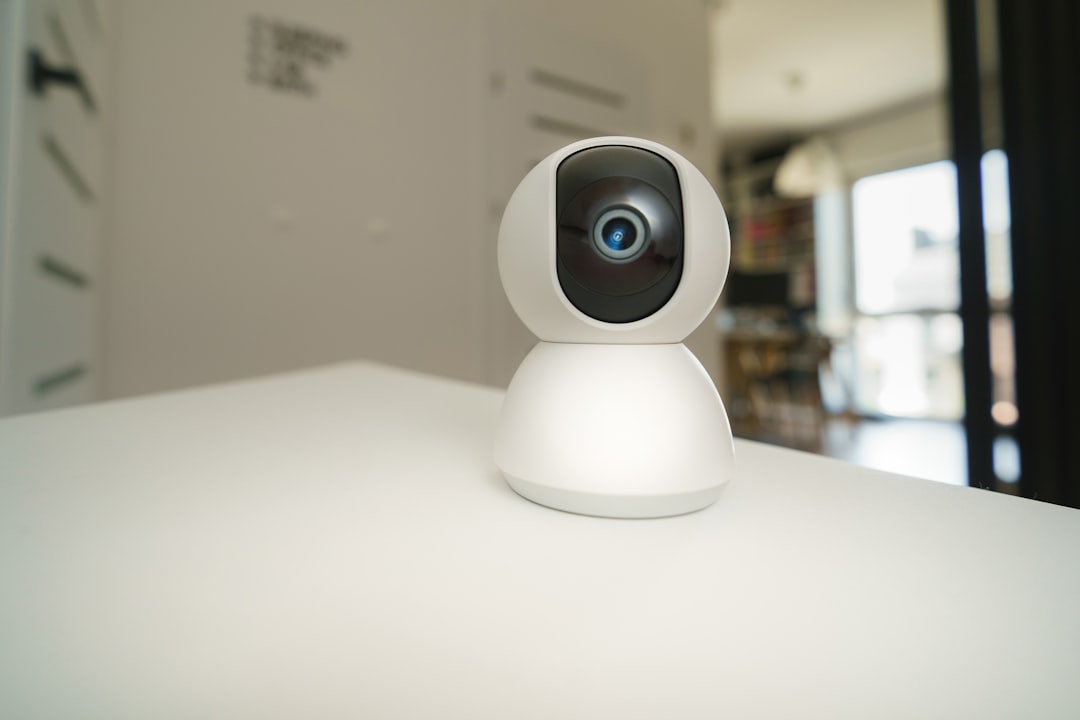Remote viewing is a practice that involves perceiving or describing details about a distant or unseen target using extrasensory perception (ESP). This phenomenon is often associated with psychic abilities, where individuals claim to access information beyond the conventional five senses. Practitioners of remote viewing believe that the mind can transcend physical boundaries, allowing them to gather insights about locations, events, or even people that are not immediately accessible.
The process typically involves a structured methodology, where the viewer enters a meditative state to enhance their intuitive capabilities and focus on the target. The concept of remote viewing has gained traction in various fields, including parapsychology and military intelligence. It is often viewed as a tool for exploration and understanding, enabling individuals to tap into a collective consciousness or universal knowledge.
While skeptics question its validity, proponents argue that remote viewing can yield accurate and meaningful information, making it a fascinating subject of study for both enthusiasts and researchers alike.
Key Takeaways
- Remote viewing is the practice of seeking impressions about a distant or unseen target using paranormal means or extra-sensory perception.
- Remote viewing has a history dating back to the 1970s, when it was developed by the U.S. government for military and intelligence purposes.
- The theory behind remote viewing suggests that the mind is capable of perceiving information beyond the five senses, allowing individuals to access non-local information.
- Remote viewing has been explored as a potential method for communicating with extraterrestrial beings, with some claiming to have made contact through this practice.
- Techniques for remote viewing include meditation, visualization, and the use of protocols to focus and direct the mind’s perception.
The History of Remote Viewing
The origins of remote viewing can be traced back to ancient practices of divination and spiritual exploration. Cultures around the world have long believed in the existence of psychic phenomena, with shamans and mystics often serving as intermediaries between the physical and spiritual realms. However, the modern concept of remote viewing began to take shape during the Cold War era when governments sought unconventional methods for intelligence gathering.
The U.S. government, particularly through programs like Stargate Project, invested in research to explore the potential of psychic abilities for military applications. In the 1970s and 1980s, remote viewing gained prominence as scientists and researchers began to study it more rigorously.
Figures such as Dr. Russell Targ and Dr. Harold Puthoff played pivotal roles in legitimizing remote viewing through controlled experiments at Stanford Research Institute (SRI).
Their work demonstrated that individuals could accurately describe targets that were hidden from view, leading to increased interest in the phenomenon. As a result, remote viewing transitioned from a fringe belief to a subject of serious inquiry, attracting attention from both skeptics and believers.
The Theory Behind Remote Viewing

The theoretical framework surrounding remote viewing posits that consciousness is not confined to the physical body but is instead a non-local phenomenon. This perspective suggests that individuals can access information from a universal consciousness or collective mind, transcending time and space. Proponents argue that this ability is inherent in all humans, though it may require training and practice to develop fully.
The process often involves entering altered states of consciousness, which can facilitate deeper intuitive insights. One of the key theories related to remote viewing is the concept of quantum entanglement, which posits that particles can become interconnected regardless of distance. Some remote viewing practitioners draw parallels between this scientific principle and their experiences, suggesting that thoughts and intentions can influence distant events or locations.
This intersection of science and spirituality creates a rich tapestry of understanding that continues to evolve as researchers explore the boundaries of human consciousness.
Remote Viewing and Extraterrestrial Communication
| Metrics | Remote Viewing | Extraterrestrial Communication |
|---|---|---|
| Success Rate | Varies widely | Unknown |
| Methods | Clairvoyance, telepathy | SETI, radio signals |
| Evidence | Anecdotal, controversial | No conclusive evidence |
| Scientific Study | Some research exists | Limited scientific study |
The intersection of remote viewing and extraterrestrial communication has sparked considerable interest among enthusiasts and researchers alike. Some practitioners believe that remote viewing can be utilized as a means to connect with extraterrestrial beings or civilizations. This notion stems from the idea that if consciousness can transcend physical limitations, it may also extend beyond Earth, allowing individuals to tap into the thoughts or intentions of non-human entities.
Proponents argue that remote viewing could serve as a bridge for communication with extraterrestrial life forms, enabling humans to gain insights into their existence, culture, and technology. By focusing on specific targets believed to be associated with alien life, practitioners hope to receive information that could shed light on humanity’s place in the universe. This perspective not only fuels curiosity but also raises profound questions about the nature of consciousness and its potential connections to otherworldly beings.
Techniques for Remote Viewing
Remote viewing techniques vary widely among practitioners, but many share common elements designed to enhance focus and intuition. One popular method involves creating a quiet environment conducive to relaxation and concentration. Practitioners often begin by entering a meditative state, allowing their minds to quiet down and become receptive to subtle impressions.
Visualization techniques may also be employed, where viewers imagine themselves at the target location or event. Another widely used technique is known as “coordinate remote viewing,” which involves assigning specific numerical coordinates to a target. This method provides a structured approach, allowing viewers to focus their attention on the assigned numbers while attempting to access information about the target.
Journaling is also an essential aspect of remote viewing practice; participants document their impressions, sketches, and thoughts during sessions to analyze later for accuracy and insights.
Remote Viewing and Alien Encounters

The relationship between remote viewing and alien encounters is a topic that has captivated many within the UFO community. Some individuals claim to have used remote viewing techniques to gain insights into past or ongoing encounters with extraterrestrial beings. These experiences often involve vivid imagery or sensations that provide details about alien technology, intentions, or even their home planets.
While anecdotal evidence abounds, scientific validation remains elusive. Nonetheless, those who have engaged in remote viewing related to alien encounters often report profound experiences that challenge conventional understanding of reality. These encounters may lead individuals to question their beliefs about life beyond Earth and inspire further exploration into the mysteries of the universe.
The Benefits of Remote Viewing in Communicating with Aliens
The potential benefits of utilizing remote viewing for communication with extraterrestrial beings are numerous. For one, it offers an alternative means of gathering information about alien civilizations without relying on traditional methods such as physical contact or technological communication. This could be particularly valuable in situations where direct interaction is impossible or impractical.
Moreover, remote viewing may foster a deeper understanding of humanity’s place in the cosmos. By accessing insights from non-human entities, individuals may gain perspectives that challenge existing paradigms and encourage open-mindedness toward the unknown.
Challenges and Limitations of Remote Viewing in Communicating with Aliens
Despite its intriguing possibilities, remote viewing faces several challenges and limitations when it comes to communicating with extraterrestrial beings. One significant hurdle is the subjective nature of the practice; results can vary widely among individuals based on their level of experience, belief systems, and mental states. This variability raises questions about the reliability and accuracy of information obtained through remote viewing sessions.
Additionally, there is no consensus on how to interpret the information received during remote viewing sessions related to aliens. The imagery or impressions may be symbolic rather than literal, leading to potential misinterpretations. Furthermore, skeptics argue that many claims surrounding remote viewing and alien communication lack empirical evidence, making it difficult for mainstream science to accept these practices as valid methods for exploring extraterrestrial life.
Remote Viewing and the Search for Extraterrestrial Intelligence (SETI)
Remote viewing has found its place within the broader context of the Search for Extraterrestrial Intelligence (SETI). While traditional SETI efforts focus on detecting signals from advanced civilizations through radio telescopes and other technological means, some researchers advocate for incorporating remote viewing as an additional tool in this quest. They argue that human consciousness may offer unique insights into potential extraterrestrial signals or phenomena that conventional methods might overlook.
Integrating remote viewing into SETI initiatives could provide a complementary approach to understanding the universe’s mysteries. By combining scientific inquiry with intuitive exploration, researchers may uncover new avenues for discovering intelligent life beyond Earth. This interdisciplinary approach highlights the importance of considering diverse methodologies when addressing complex questions about existence in the cosmos.
Ethical Considerations in Remote Viewing and Alien Communication
As interest in remote viewing and alien communication grows, ethical considerations come into play regarding how these practices are conducted and interpreted. One primary concern revolves around consent; if individuals claim to communicate with extraterrestrial beings through remote viewing, questions arise about whether these entities have given permission for such interactions. Respecting the autonomy of non-human intelligences becomes paramount in ensuring ethical engagement.
Moreover, there is a responsibility among practitioners to approach their work with integrity and transparency. Misrepresentation or sensationalism can lead to misinformation and skepticism surrounding legitimate research efforts. Establishing ethical guidelines within the remote viewing community can help foster trust and credibility while promoting responsible exploration of these profound topics.
The Future of Remote Viewing and Alien Communication
The future of remote viewing in relation to alien communication holds exciting possibilities as technology advances and societal attitudes toward consciousness evolve. As more individuals explore their intuitive capabilities, there may be an increase in collaborative efforts aimed at understanding extraterrestrial life through remote viewing practices. This could lead to innovative research initiatives that bridge scientific inquiry with spiritual exploration.
The potential for breakthroughs in understanding consciousness itself could pave the way for new paradigms regarding communication with non-human entities. Ultimately, the journey into the unknown promises to be both challenging and enlightening as humanity seeks answers among the stars.
In recent years, the concept of remote viewing has gained traction among those interested in the potential for human consciousness to transcend physical boundaries. This intriguing phenomenon, often associated with the ability to perceive distant or unseen targets, has sparked discussions about its application in communicating with extraterrestrial beings. An article on X File Findings delves into the possibilities of using remote viewing as a tool for alien communication, exploring both the scientific and speculative aspects of this fascinating subject. The article provides insights into how remote viewing might bridge the gap between humans and extraterrestrial intelligences, offering a unique perspective on interstellar communication.
🤯WATCH THIS! The Lost Tape: CIA Psychic Predicted Alien’s Voice
FAQs
What is remote viewing?
Remote viewing is the practice of seeking impressions about a distant or unseen target using paranormal means, such as extrasensory perception (ESP) or “sensing” with the mind.
What is alien communication?
Alien communication refers to the potential exchange of information or messages between humans and extraterrestrial beings, if they exist.
Can remote viewing be used to communicate with aliens?
There is no scientific evidence to support the claim that remote viewing can be used to communicate with aliens. Remote viewing is a controversial practice and is not widely accepted within the scientific community.
Has there been any credible evidence of remote viewing alien communication?
There is no credible evidence to support the claim that remote viewing has been used to communicate with aliens. Claims of such communication are typically considered to be pseudoscience.
What are the potential risks of believing in remote viewing alien communication?
Believing in remote viewing alien communication without credible evidence can lead to misinformation and a lack of critical thinking. It is important to approach such claims with skepticism and rely on scientific evidence.
